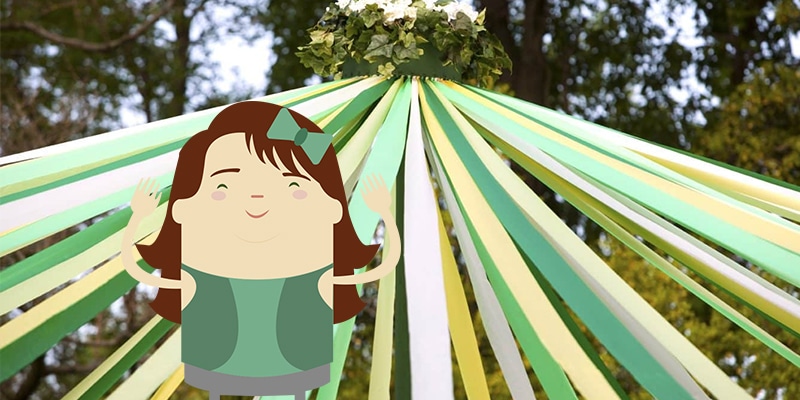Calendario Cultural – Mayo: Maypole Dancing
Escrito por Británico

Does the term Maypole Dancing ring a bell? Maypole Dancing is a serious business. It may look to the untrained eye like a bunch of schoolchildren skipping around in a random fashion, but it does in fact involve careful choreography to create complex patterns of woven, multicoloured ribbons around the pole. In the following lines, you will find some information about it.
Maypole Dancing
Its origin
Maypole dancing is a tradition on May Day. It is believed to have started in Roman Britain around 2,000 years ago, when soldiers celebrated the arrival of spring by dancing around decorated trees thanking their goddess Flora.
What happened then and now?
On the first day of May, before dawn, people would get up and make their way into the fields and woods to gather flowers, green branches and, in some areas, hawthorn. These were carried back home to decorate the outside of the houses and to be worn in the hair. Dancing and festivities followed.
How to do a Maypole Dance
- Put the Maypole together. Unless you have access to a Maypole that has already been made for the purpose, you will need to make your own. Find a tall pole and attach ribbons or strong streamers at the top of the pole. These ribbons will need to be an even number, the same number of ribbons as there are dancers.
- Divide the dancers into two groups. For example, you might have them count off one, two, one, two, one, two around the circle, or A, B, A, B, etc. The A’s can go clockwise and the B’s go counterclockwise. The dancers go alternately right and left of the dancers going in the opposite direction.
- Develop a pattern. The pattern the dancers should keep in mind is over, under, over, under, over, under etc.
- On the count of “over”, the dancer raises his ribbon slightly so the dancer coming in the opposite direction can duck under his ribbon.
- On the count of “under” the dancer ducks under the ribbon of the dancer coming in the opposite direction.
(taken from Wikihow )
Common Features
The Green Man
Although the details varied from place to place, some common themes occur. The first is the tradition of the Green Man, celebrated in numerous pub names, who wore a suit of green and was covered in green branches and leaves. The Green Man was variously thought to represent the wild wood, the fresh shoots of spring plants or the strength of nature.
The Queen of May
Another common feature in May Day events was the creation of the Queen of May. This young lady was chosen each year, usually as the most eligible spinster or most beautiful young woman in the village. She was crowned with flowers or greenery and treated like nobility for the day.
The maypole
The maypole is considered the most important feature. Some of these poles could be truly enormous. The pole was raised early on May Day morning to act as the centre feature of the dancing, drinking and merrymaking of the day. So famous did the maypole become that King Henry VIII and Queen Catherine of Aragon are known to have taken part in the celebrations on at least one occasion.
For further information you can go to:
Escrito por Británico

